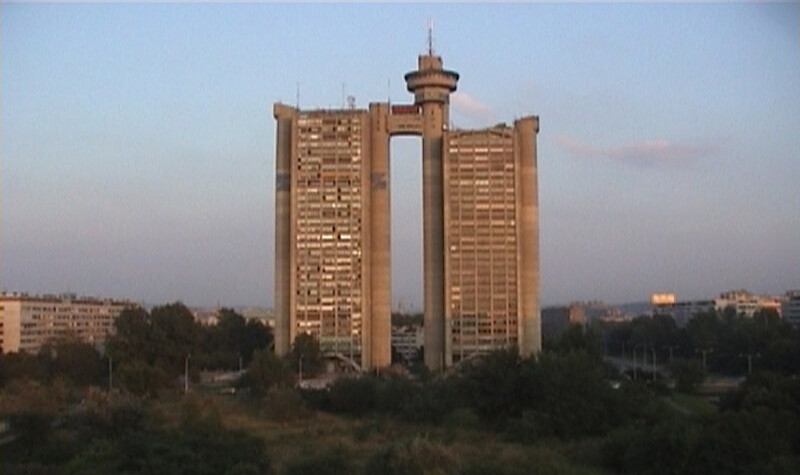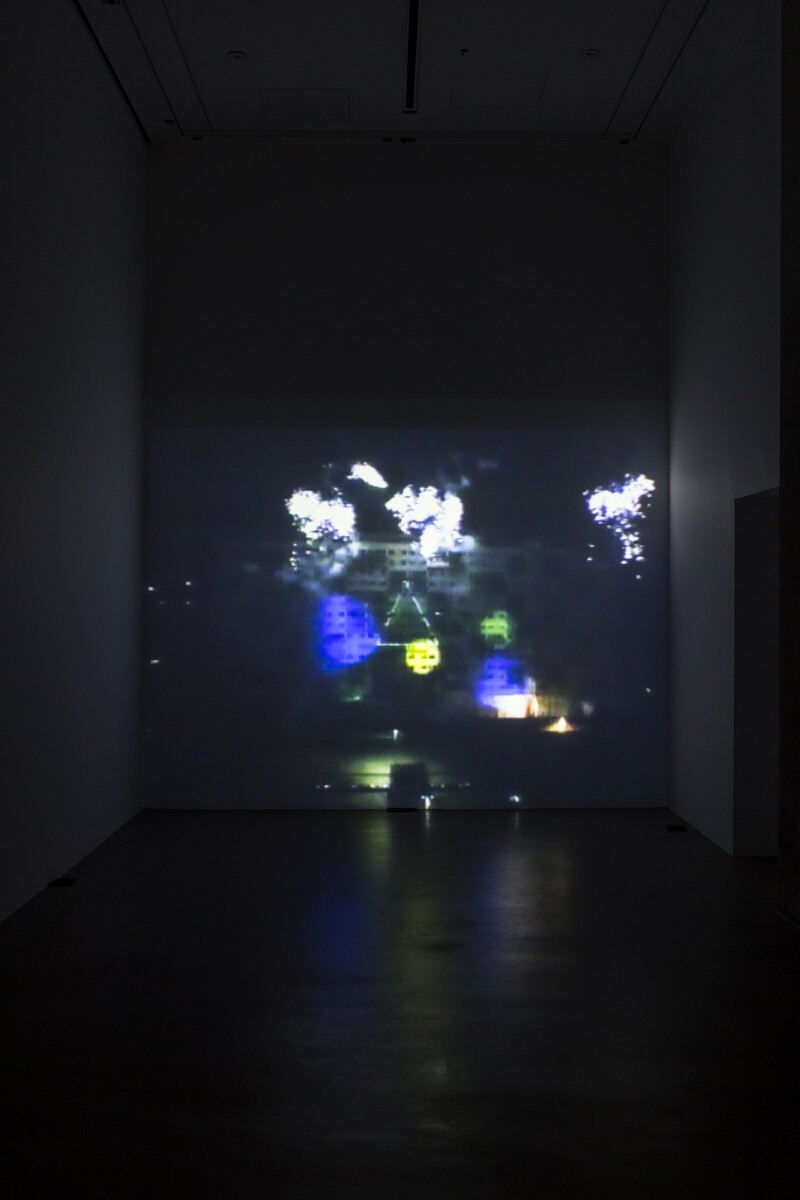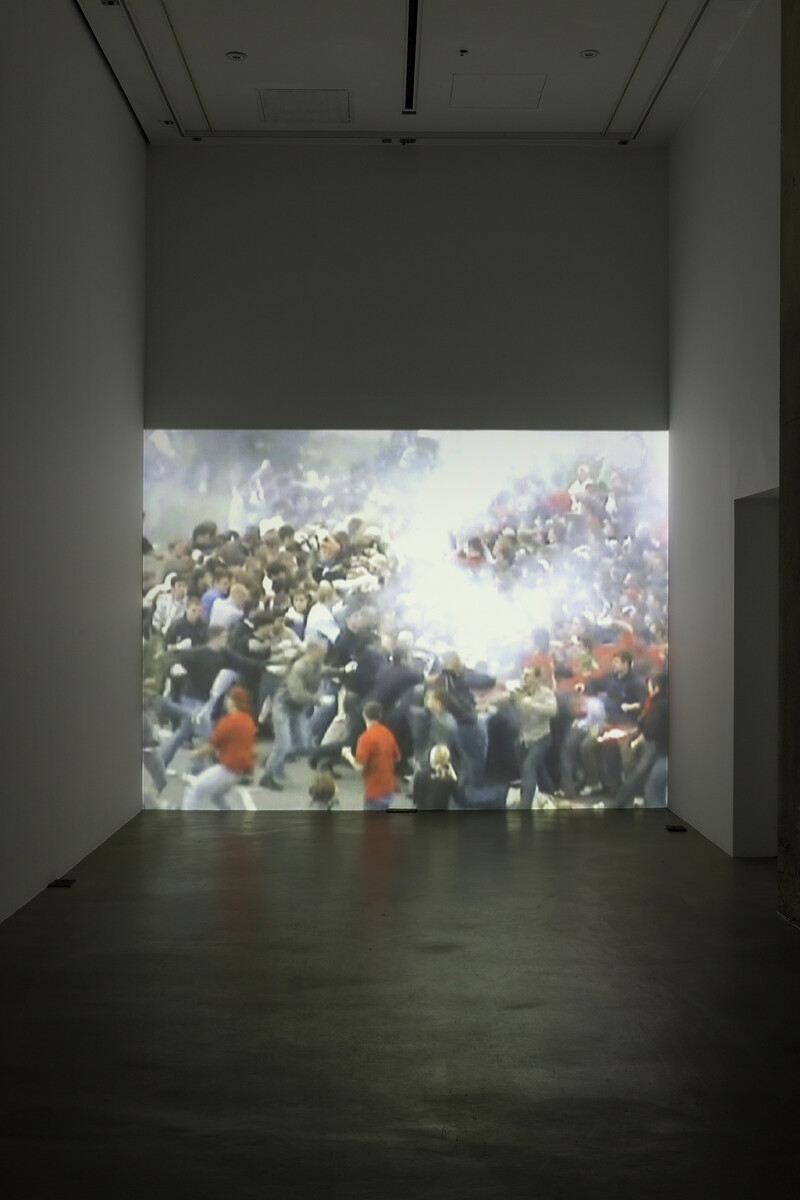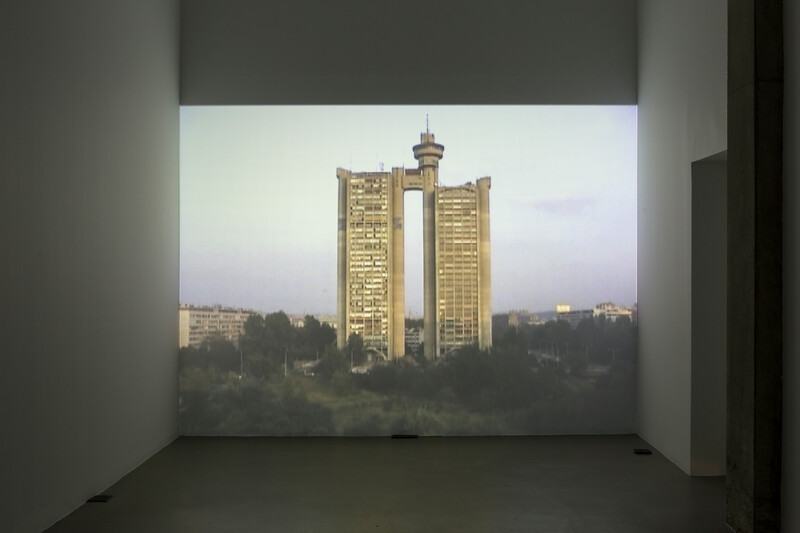



Desniansky Raion
Architecture in the work of Cyprien Gaillard generally appears only in its undoing, in its collapse. Deniansky Raion is set to the music of French composer Koudlam and captures the failed utopian aspirations of early twentieth-century buildings. The video opens with a shot of the Genex Tower, a colossal Brutalist building in Belgrade, Serbia, and then cuts to the parking lot of a drab housing complex in St. Petersburg, Russia, where we witness two large groups of men, fight clubs, clashing in a flurry of fists—an agonizing display of raw violence set against the stark backdrop of the housing project. The dramatic fights, visually reminiscent of neoclassical battle scenes, erupt to the tune of Koudham’s unsettling, entropic soundtrack. The video then cuts to a spectacular detonation of a Parisian apartment complex accompanied by a lightshow, fireworks, and music, only to conclude with an aerial shot of a desolate, paltry housing complex—which the artist approximates to the ruins of Stonehenge—in a district called Desniansky Raion in the suburbs of Kiev, Ukraine. As the video reveals, these and other modernist housing blocks found across the Western world once embodied notions of community, but soon came to be viewed as architectural eyesores and unsuccessful experiments in high-density housing. Whether through embedding old protest footage or referencing key historical moments, Gaillard’s evocation of the past acts as a response to the nostalgia surrounding it. He isn’t simply re-litigating the impact of modernism in some overtly ironic commentary on its ethical and aesthetic value. Instead, the artist’s anodyne presentation of this ruined monument to modernist promise set to dancehall-style music becomes an oblique meditation on how certain artifacts from the past continue to function in the contemporary moment in unforeseen ways.
FIELD NOTES
(1) We think of architecture as a static thing, but physical structures and built environments are elastic and responsive. Architecture […] is political space—social forces slowing into form. This is true on the scale of a building and also on that of larger territories. Buildings undergo constant deformations: structures are said to “behave” in response to forces, and buildings are said to “perform” (or mis-perform) in relation to program. […] The structural pathology of a building is a diagram that records the influence of an entangled and potentially infinite political/natural environment, registering year-on-year temperature changes, almost imperceptible fluctuations in humidity and pollution, which are themselves indications of political transformations, patterns, and tendencies. […] A blast, however, marks a limit to the responsive elasticity of built structures. (footnote: Eyal Weizman, Forensic Architecture: Notes from Fields and Forums (Kassel: dOCUMENTA 13 and Ostfildern: Hatje Cantz, 2012), 7.

The Blackwood
University of Toronto Mississauga
3359 Mississauga Road
Mississauga, ON L5L 1C6
[email protected]
(905) 828-3789
The galleries are currently closed.
Facebook | Twitter | Instagram
Sign up to receive our newsletter.
The Blackwood is situated on the Territory of the Mississaugas of the Credit, Seneca, and Huron-Wendat.